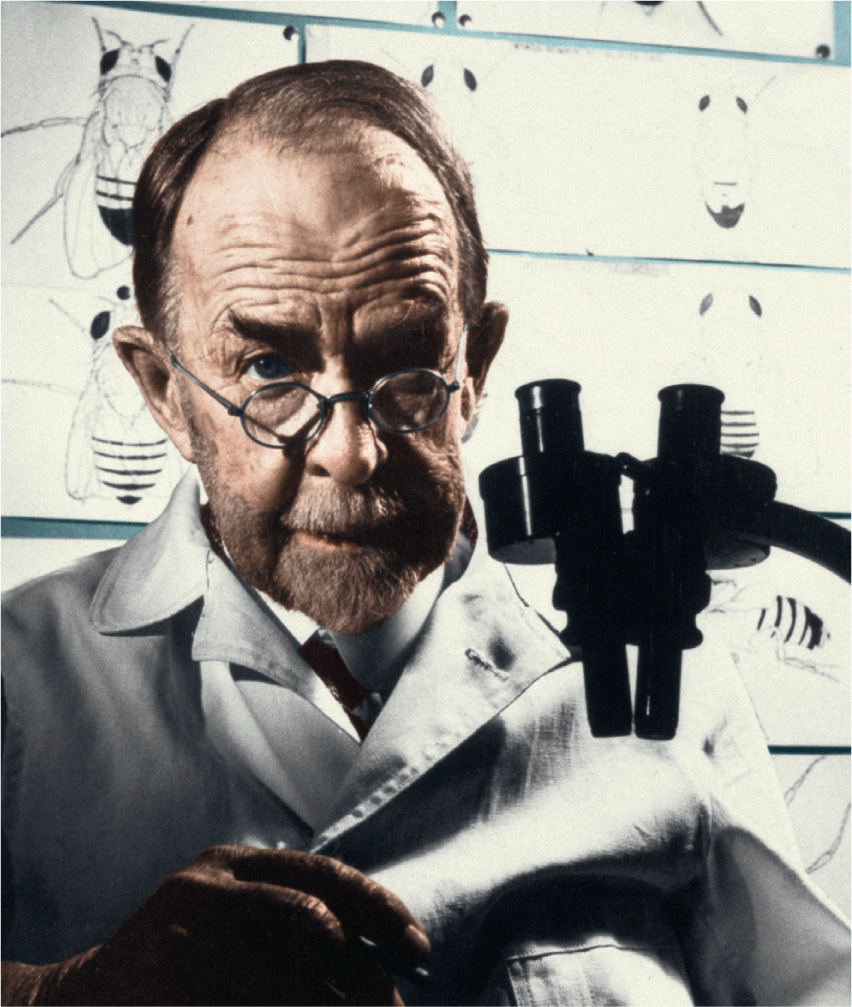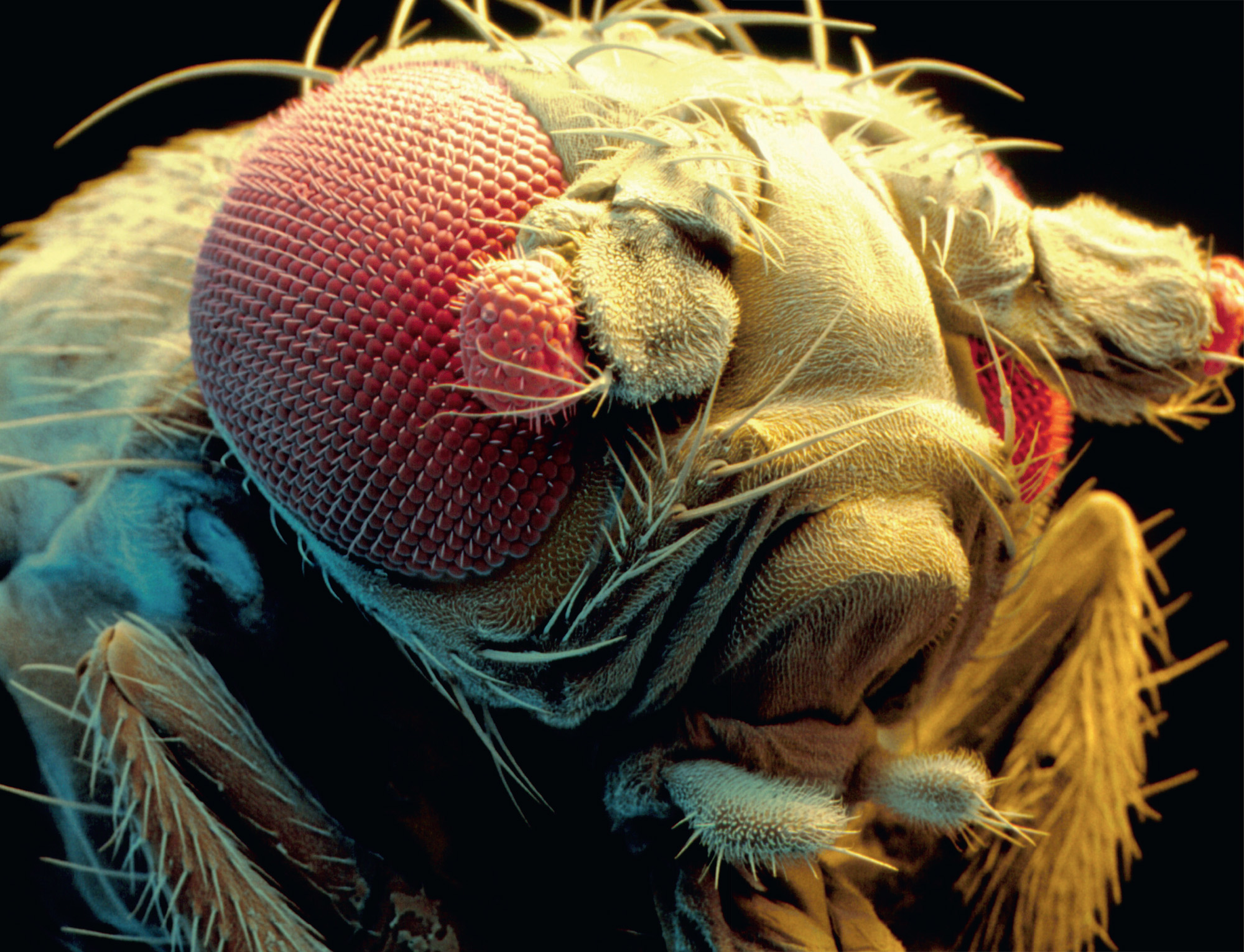
Thomas Hunt Morgan (1866–1945).
A key step towards an understanding of how evolution works was taken by Thomas Hunt Morgan and his colleagues, working at Columbia University in the second decade of the twentieth century. But it had a long pedigree.
Back in the 1870s, researchers had observed that during reproduction the nucleus of an egg cell and the nucleus of a sperm cell fuse to make a single new nucleus combining material from both parents. In 1879 the German Walther Flemming found that the nucleus contains threads of material which absorb the coloured dyes used by microscopists, so he called them chromosomes.
Each cell contains two sets of chromosomes, and in everyday cell division both sets are copied before the cell divides to make two new cells. But when egg or sperm cells are made, first there is a stage where material from the two sets of chromosomes gets mixed up, chopping bits out and joining them together in new combinations, then only one set of the ‘new’ chromosomes goes in to each sex cell. It is only when the egg and sperm come together to make a new cell that the full complement of chromosomes is restored, with one set from each parent. August Weismann, studying this behaviour at the University of Freiburg in the 1880s, concluded that ‘heredity is brought about by the transmission from one generation to another of a substance with a definite chemical and, above all, molecular constitution’, which is found in chromosomes. This is what Morgan set out to investigate.

Morgan was doing the same kinds of experiment as Gregor Mendel (see here), but working with the fruit fly Drosophila rather than with peas. Mendel had to wait a year between generations in his studies, but the flies produce a new generation every two weeks, with the females laying hundreds of eggs at a time. The sex of the offspring is determined by one of the chromosomes – as it happens, the most easily identified. The chromosomes that determine sex come in two varieties, known as X and Y, from their shapes. In most species, the cells of females always carry the XX pair, while the cells of males carry the XY pair. So offspring always inherit one X from the mother, and either X or Y from the father. If it inherits another X it will be female, if it inherits Y it will be male. But as Morgan discovered, this is not all that those chromosomes do.
Morgan started out with a population of flies that all had red eyes, like their ‘wild’ counterparts. But as a result of a chance mutation, in 1910 a single white-eyed male showed up among the thousands of flies being studied. Intrigued, Morgan mated the white-eyed male with a normal red-eyed female. All the offspring had red eyes. Then, he studied the grandchildren and succeeding generations, the way Mendel had studied peas. In the second generation, there were red-eyed females, red-eyed males, and white-eyed males, but no white-eyed females. In 1911 he concluded, after carrying out a proper statistical analysis, that whatever it was that caused the white-eye mutation must be a factor carried on the X chromosome. In the second generation females, even if one X chromosome has the mutation this is dominated by the normal factor on the other X chromosome; but in males there is no ‘other’ X chromosome to do the job. Further experiments showed that other properties of fruit flies are also linked with their sex, and must also be carried on the X chromosome. Morgan picked up the term ‘gene’, coined by the Dane Wilhelm Johannsen, for these Mendelian ‘factors’, developing the image of genes strung out along the thread-like chromosomes like beads strung out along a wire.

Further work showed how the process of shuffling genes to make new combinations for sex cells occurs. Paired chromosomes are chopped up, with pieces being swapped from one chromosome to the other (termed ‘crossing over’) then rejoined (‘recombination’). Genes that are further apart along the chromosome are more likely to get separated when this process of crossing over and recombination occurs, while genes that are close together on the chromosome seldom get separated. This provided scope for mapping out the order of genes along the chromosomes, although this involved a great deal of painstaking work. It is widely accepted, though, that the key moment when the idea of Mendelian heredity and genetics became established was when Morgan and his colleagues published a classic book, The Mechanism of Mendelian Heredity, in 1915. Morgan continued his work on heredity, writing The Theory of the Gene, published in 1926, and receiving the Nobel Prize in 1933 ‘for his discoveries concerning the role played by the chromosome in heredity’.